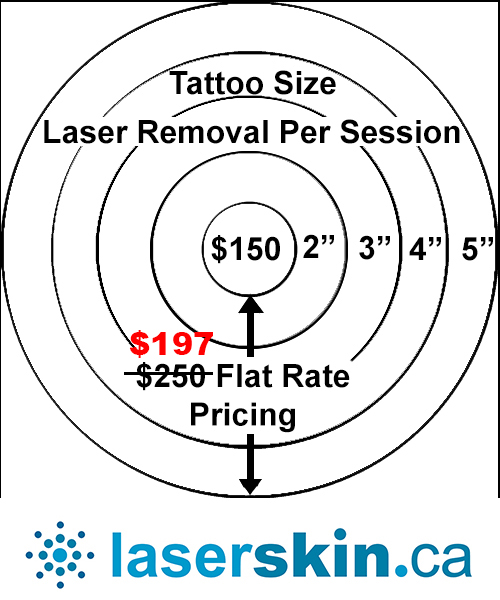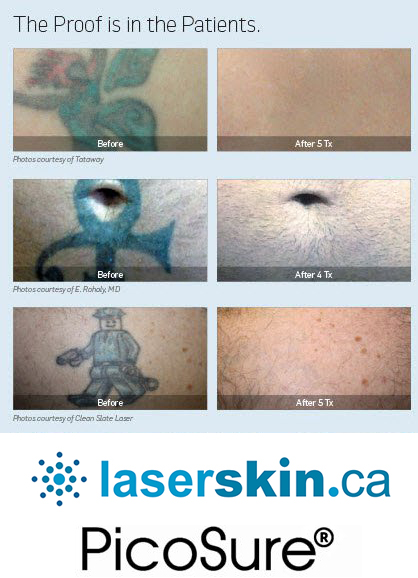
Table of Contents
Tattoo Removal Cost: A Comprehensive Guide Featuring Laser Skin Clinics in Toronto and Richmond Hill
The journey of removing a tattoo is as much a technological marvel as it is a personal decision. With advancements in laser technology, erasing the ink that once felt permanent has become a safer, more effective, and increasingly accessible option for many. This article delves into the intricacies of tattoo removal cost, spotlighting the use of the PicoSure Laser at leading laser skin clinics in Toronto and Richmond Hill and the appealing flat fee pricing model transforming the industry.
Understanding Tattoo Removal
Tattoo removal is a process that requires precision, patience, and the right technology.
As laser technology has advanced, it has developed more refined techniques for breaking down ink particles and minimizing damage to the surrounding skin.
Among the various technologies available, the PicoSure Laser has emerged as a frontrunner, known for its efficacy in removing tattoos more quickly and with fewer treatments than traditional lasers.
The PicoSure Advantage
The PicoSure Laser represents a significant leap forward in tattoo removal technology. Unlike traditional lasers that rely on heat energy, PicoSure uses ultra-short pulses (one trillionth of a second in length) to hit the ink particles with great pressure, shattering them into tiny dust-like particles. These particles are then absorbed by the body and eliminated naturally. This process is more effective, especially for stubborn inks and colours that were previously difficult to remove. Still, it also minimizes the risk of skin damage and reduces the recovery time significantly
Book Your Free Consultation Today Or Call (647) 560-9233
By providing your phone number you agree to receive informational text messages from laserskin.ca. Consent is not a condition of purchase. Message frequency will vary. Msg & data rates may apply. Reply HELP for help or STOP to cancel.

Laser Skin Clinic Offerings in Toronto and Richmond Hill
In the bustling cities of Toronto and Richmond Hill, laser skin clinics have adopted the PicoSure Laser, recognizing its unparalleled capabilities in tattoo removal. These clinics stand out not only for their cutting-edge technology but also for their expert staff, who are trained to provide personalized treatment plans tailored to their client’s unique needs and skin types. Opting for a reputable clinic is crucial, as the technician’s expertise plays a significant role in the outcome of the removal process.
The Cost of Tattoo Removal
The cost is one of the most pressing questions for individuals considering tattoo removal. Traditionally, tattoo removal pricing has been variable, often based on the size of the tattoo, the design’s complexity, the ink’s colours, and the number of sessions required. This variable pricing model can make the removal cost unpredictable, adding a layer of financial uncertainty to the decision.
Flat Fee Pricing Model
Addressing this concern, some laser skin clinics in Toronto and Richmond Hill have introduced a flat fee pricing model, making tattoo removal more transparent and accessible. A standout example of this approach is offering a flat fee of $197 for tattoo removal sessions covering an area up to 6″ x 6″.
This pricing strategy stands out for its straightforwardness, providing people with a transparent view of the financial investment required to begin their tattoo removal process.
The flat fee of $197 encompasses using the PicoSure Laser, ensuring clients can access the latest technology without worrying about escalating costs. This approach demystifies the financial aspect of tattoo removal, making it a more viable option for a broader demographic. It’s a game-changer for those hesitant about tattoo removal due to cost concerns.

Factors Influencing Tattoo Removal Cost
While the flat fee pricing model offers a straightforward approach, it’s important to note that the total cost of the removal process can still vary depending on several factors, including:
- The number of sessions required: While the PicoSure Laser can reduce the number of sessions needed, the total number of treatments depends on the tattoo’s size, ink depth, and colour saturation.
- Tattoo location: Tattoos on areas with more blood flow tend to fade faster than those with less circulation.
- Ink colours: Certain ink colours are more challenging to remove than others, with blue and green pigments typically responding well to PicoSure treatments.
- Skin type: The technician will assess the individual’s skin type to ensure the most effective and safe treatment plan, which can influence the treatment approach.
The Value of Expertise
Choosing a reputable clinic that offers the PicoSure Laser treatment is crucial for ensuring a safe and effective tattoo removal process.
The technicians’ skills, the calibre of the technology employed, and the clinic’s dedication to patient welfare significantly influence the effectiveness of the treatment. In Toronto and Richmond Hill, flat fee pricing clinics provide financial transparency and demonstrate a commitment to making tattoo removal accessible and straightforward for their clients.
Q&A
- What is PicoSure Laser, and how does it differ from traditional tattoo removal methods?
PicoSure Laser is an advanced tattoo removal technology that uses ultra-short pulse bursts of energy to shatter ink particles into tiny fragments, which are then naturally eliminated by the body. Unlike traditional laser treatments that rely on heat to break down ink particles, PicoSure’s pressure wave technology allows for more efficient ink destruction with fewer treatments, less damage to surrounding tissue, and quicker recovery times.
- Can PicoSure Laser remove all colours of tattoo ink?
The PicoSure Laser eliminates challenging ink colours, including blues, greens, and stubborn black ink, offering substantial enhancements in removing a wide range of ink hues. However, certain colours may prove more resistant to removal. The success rate of eradicating these inks can differ, influenced by the ink’s specific composition and shade.
- What factors influence the cost of tattoo removal?
Several factors influence the cost of tattoo removal, including the size of the tattoo, the complexity of the design, the colours of the ink, the number of sessions required for complete removal, and the technology used (e.g., PicoSure Laser). Some clinics also offer flat fee pricing for treatments covering a specific size, making costs more predictable.
- What is the significance of flat fee pricing in tattoo removal, and how does it benefit clients?
Flat fee pricing simplifies the cost of tattoo removal by charging a single rate for treatments up to a certain size, such as 6″ x 6″. This model benefits clients by providing clear, upfront pricing, eliminating uncertainty about the total cost of the removal process. It makes financial planning easier for clients and can make tattoo removal accessible to a wider audience.
- How many sessions are typically required for tattoo removal with PicoSure Laser, and what factors affect this?
The amount of sessions needed to remove a tattoo using the PicoSure Laser depends on various aspects, such as the tattoo’s size, ink depth and concentration, colour palette, and the person’s skin type. On average, PicoSure can reduce the number of sessions needed compared to traditional lasers, often ranging from fewer sessions for simpler tattoos to several for more complex or larger tattoos. The exact number is determined after a professional consultation and assessment of the tattoo.
Conclusion
The decision to remove a tattoo is significant, encompassing not just the desire to erase ink but also the pursuit of new beginnings or the removal of memories. With the advent of the PicoSure Laser and the introduction of flat fee pricing models by laser skin clinics in Toronto and Richmond Hill, the process has become more effective, less daunting, and more accessible. At a flat fee of $197 for an area up to 6″ x 6″, individuals can now approach tattoo removal with a clear understanding of the cost, backed by the assurance of cutting-edge technology and expert care. As the industry continues to evolve, the focus remains on providing safe, effective, and patient-centric treatments that reflect the diverse needs and concerns of those seeking to remove their tattoos.
